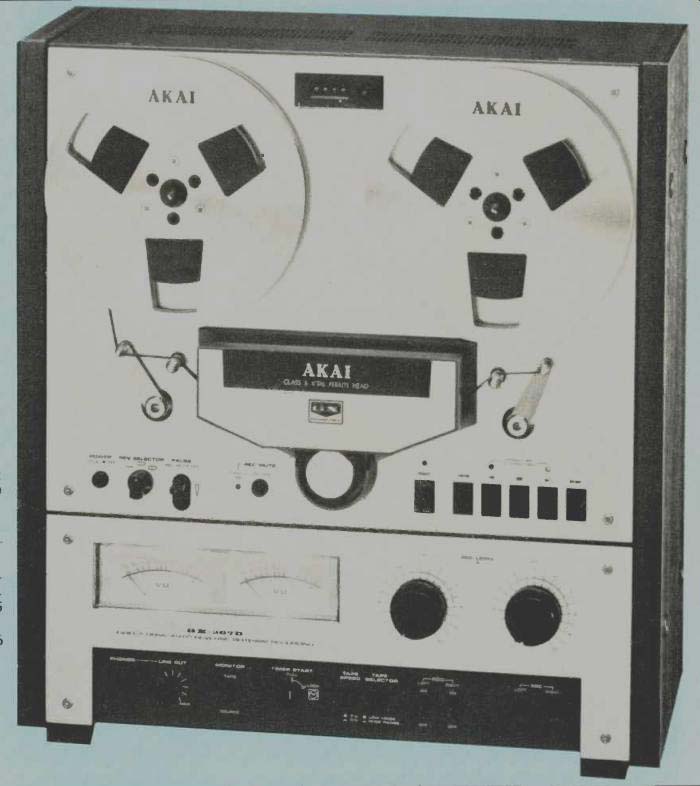
MANUFACTURER'S SPECIFICATIONS
Frequency Response:
30 Hz to 26 kHz at 7 1/2 ips, 30 Hz to 20 kHz at 3 3/4 ips.
Harmonic Distortion: 0.5 percent.
S/N Ratio: 56 dB.
Erasure: 70 dB.
Input Sensitivity: Mike, 0.25 mV; Line, 70 mV.
Output Level: Line, 0.775 V; Headphone, 100 mV at 8ohms.
Flutter: 0.06 percent W rms at 7 3/4 ips, 0.09 percent at 3 3/4 ips.
Speed: ±0.5 percent.
Wind Times: 90 seconds for 1200 ft.
Dimensions: 17.3 in. (44 cm) W x 18.5 in. (47 cm) H x 9.8 in. (25 cm) D.
Weight: 45.5 lbs. (20.6 kg).
Price: $850.00.
The Akai GX 267D 1/4-track open-reel deck includes many features of interest to audiophiles and has very good performance overall. The front panel is obviously different from most because of the large, centrally located pinch roller, an essential part of the six-head, auto-reverse system. That's right: There are three heads for each record/play direction for off-the-tape monitoring during the record process. A three-position switch selects forward only; forward, reverse, and stop, and forward and reverse continuously (play only). The tape foil that causes the reverse in direction is detected by sensing poles in the left tape guide and in the right tension arm. The Rec Mute switch stops recording on the tape, but the signal continues to appear on the meters, with the monitor switch on Source. A light next to the mute switch flashes every second. This is a great aid if timing is required. The use of Pause automatically removes mute upon release--good thinking, Akai! Tape motion switches are large, light-touch pushbuttons with complete logic control and status lights for forward, reverse, and record. Any mode can be chosen while in any other mode, including flying-start recording, changing direction while recording, etc. The two level meters are of large size with scales expanded above "0" and have bright illumination. There are two sets of dual, concentric input-level pots, both with handy marker rings. Mike and line mixing is, therefore, a simple task, aided by the smoothness of the pots.
The phone jacks for mikes are just below. There are individual record switches for the two channels, allowing operation in monaural or stereo as desired. Pushbutton switches select tape speed, 7 1/2 or 3 3/4 ips, and bias for Low Noise or Wide Range. There is also a timer start switch, an output-level pot, a headphone phone jack, and a counter, which last is positioned above and between the two reel turntables.
The line in/out phono jacks are on the back panel. With the pane's removal, examination showed that soldering was excellent with most circuitry on two, large PCBs. Intercard connections were made with wire-wrap, multi-pin plugs, and direct wiring. All parts were identified by number, and accessibility to adjustment was good. Rigid support was provided for the three, outside-rotor, eddy-current motors. There were five internal fuses, all in clips.
Table I--Record/playback responses (-3 dB limits).
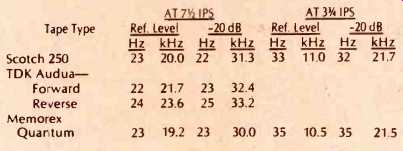
Table II--Signal/noise ratios.

Performance
The playback responses with standard tapes were generally quite good for both speeds, with the exception of being 2 dB low at 40 Hz with 3 3/4 ips. Meter indications were almost exact for the specified 185 nWb/m 0 VU. Tape speeds were within 0.5 percent in all cases, and reverse was slightly slower than forward. Responses in record/playback were very good for a number of tapes, and Scotch 250, TDK Audua, and Memorex Quantum were used for more detailed testing. Reference record level was that for 200nWb/m in playback at 1000 Hz.
The best results were obtained with the Wide Range bias setting in most cases, as there was too much of a peak around 20 kHz with these tapes when set to Low Noise. The results are shown in the plotted figures and in Table I. As shown with TDK Audua, the response even at 10 dB above 200 nWb/m (at 1 kHz) extends to 8 kHz. In general, the low end response was flatter in reverse, but the high end was more peaked. At 3 3/4 ips, the responses drooped below 40 Hz.
The phase jitter in the playback of a 10-kHz tone was about 45 degrees in forward at 7 1/2 ips; it was less than that in reverse, but greater than that at 3 3/4 ips. Phase errors between tracks averaged 25 degrees at 7 1/2 ips and 45 degrees at 3 3/4 ips.
These figures are fairly good, and the discrepancies could be indicative of the challenge of properly aligning the six heads.
The response with a 1-kHz square wave was quite good, albeit with some ringing on the leading edges, more so at 3 3/4 ips. Bias in the output during recording was 10 mV rms, slightly high.
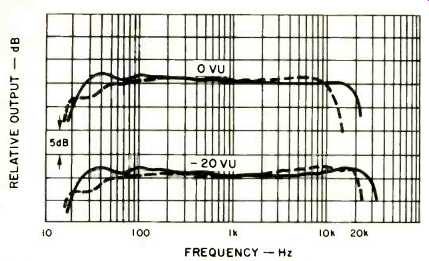
Fig 1--Frequency response with Scotch 250 tape (dashed line is 3 3/4 ips).
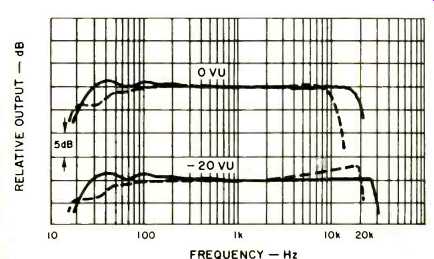
Fig. 2--Frequency response with Memorex Quantum at 7 1/2 ips (WR bias) and
3 3/4 ips (LN bias is dashed line).
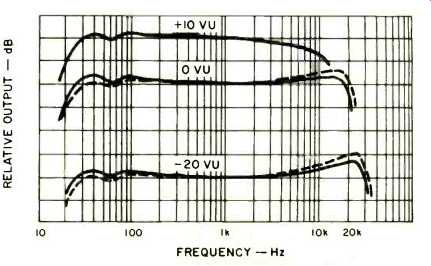
Fig. 3--Frequency response with TDK Audua at 7 ½ ips (dashed line is Reverse).
Data was taken on HDL3 vs. record level with Scotch 250 at 7 1/2 ips and with Memorex Quantum at both speeds. The results with Memorex tape at the higher speed do not have quite the linearity expected, but the figures are outstanding--very close to the best results ever obtained previously.
HDL2 and HDL5 were admirably low at all levels. HDL3 vs. frequency at the two speeds was run at reference level with Memorex Quantum. The distortion levels were as expected, with those above 2 kHz a little on the high side. All the results discussed above were secured in forward. Checks in reverse revealed somewhat higher distortion, perhaps related to the greater peaking in reverse and less bias (?). In the process of taking some of this data, it was noted that the level of HDL3 was rising and falling at a regular rate. It was determined that there were 1/4-dB cyclic variations in the level of the fundamental at a 10-Hz rate at 7 1/2 ips, at a 5-Hz rate at the lower speed. In reverse, variations were doubled. Calculation and physical measurement pinpointed the source as runout in the capstan shaft. More on this later.
The signal-to-noise ratios with both IEC A and CCIR/ARM weightings are shown in Table II. "0 Lvl" in the table is 200 nWb/m at 1000 Hz, which corresponded to +2.5 on the meters. The results are certainly very good, and much better than the specification. Separation between channels was 75 dB and erasure was greater than 80 dB, both excellent figures.
Crosstalk between adjacent tracks of opposite play direction was 78 dB down, also very good.
Mike input sensitivity was 0.28 mV, and line input sensitivity was 75 mV. Both figures are above specification, but the discrepancies are less than a dB. The input overload points were 57 mV for mike and over 10 V for line, both very good.
Output clipping appeared at a level equivalent to +13 dB relative to meter zero. The sections of the dual, concentric input pots tracked fairly well, within a dB over 35 dB for line and within a dB over 45 dB for mike. Rotation of all pots and slipping one section relative to the other were always very smooth. Output levels were 890 mV for line and 120 mV into 8 ohms for headphones, which generated high levels in all headphones tried. The output-level pot, which also controls headphone level, had channel tracking within a dB to 40 dB down from maximum. Channel levels and meter indications were very well matched. The frequency response of the VU-type meters was from 29 Hz to 36.4 kHz. Accuracy of the indications was excellent from-10 to +3, and the scales are expanded above zero. Illumination was bright and even, facilitating the reading. In the dynamic test with a 300-mS tone burst, there was an overshoot of about a dB.
The flutter at 7 1/2 ips was 0.038 percent W rms and 0.065 percent Wtd Pk, for both forward and reverse. These are excellent results, and there is nothing to fault them. At 3 3/4 ips, flutter in forward was 0.065 percent W rms and 0.09 percent Wtd Pk. In reverse, the figures were about 50 percent higher, and variations with time were greater. Tape play speeds were acceptably accurate in all modes with the standard 120-V line power, though changes in voltage caused speed shifts up to 0.25 percent. This error fits within the speed specification of ± 0.5 percent, but this characteristic could cause minor pitch or timing problems in some areas. Wind times were 70 seconds or less for 1200-foot reels, much lower than the 90-second spec, and yet the winding was smooth and quiet. Run-out at the end of the reel initiated braking very quickly with very little tape-end whipping. Switching between wind modes appeared to be immediate. Wind-to-play in any combination and reversing play/record direction required three seconds. At first, this seemed a bit on the slow side, but the logic stored any command, so it was not necessary to hold in but tons until execution.
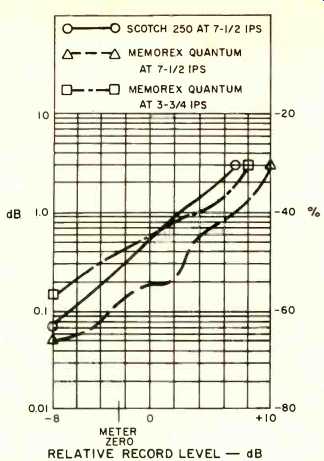
Fig. 4--Third harmonic distortion (HDL3) vs. relative record level of 1-kHz
signal. (Zero reference level is 200 nWb/m.)
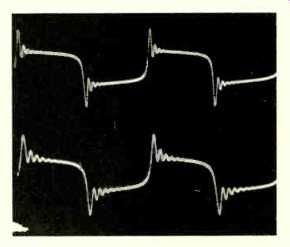
Fig. 5--Playback of 1-kHz square wave at 7 1/2 ips (top) and 3 3/4 ips (bottom).
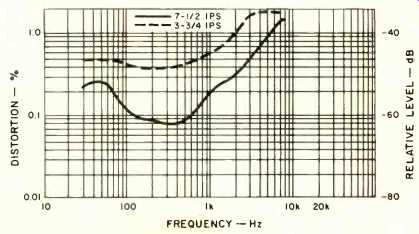
Fig. 6--Third harmonic distortion (HDL3) vs. frequency with Memorex Quantum
at a constant record level (200 nWb/m in playback at 1 kHz). Dashed line
is 3 3/4 ips.
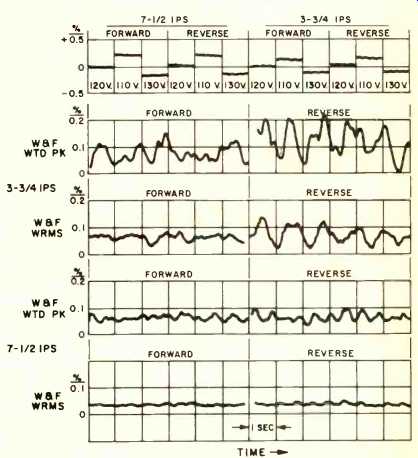
Fig. 7--Tape speed and wow and flutter, each wtd. peak and W rms, for 3
3/4 ips and 7 1/2 ips in both forward and reverse.
Listening and Use Tests
Tape threading was easily accomplished, even though it looked a bit challenging with guide posts, tension arms, and the six heads. Access for maintenance was excellent with the head-assembly cover removed. All controls and switches were completely reliable during the testing, which included attempts to confuse the tape-motion logic. The input-level pots were especially nice to use; the just-right friction coupling allowed adjusting both channels individually with one hand. Timer start, pause, and record mute all worked as expected; the one-second flasher with mute aided in some copy work. The meters seemed a little sluggish with music inputs, probably associated with the overshoot measured before.
The 24-page instruction book has excellent text and illustrations, with considerable detail presented lucidly. Akai should also get a pat on the back for showing the use of a tape splicer. That's the way it ought to be, but a surprising number of instruction books show the use of scissors (ugh!).
Various sources were recorded while set up for monitoring the playback. Some attention was directed to ascertaining whether it was possible to detect the small amplitude variations that had appeared when using test tones. As expected, no such effect was detected in the playback of recorded music. The sound was very close to the original in most every case. There was a slight loss in the lowest bass at 3 3/4 ips, and added presence at times with both speeds. A recording of a consort of viols sounded better in playback (to me) because of this effect. Record, pause, and stop noises were all very low, barely detectable by meter or ear. The Akai GX267D open-reel deck has many features, including off-the-tape monitoring for both forward and reverse, and attractive performance parameters for its moderate price.
-Howard A. Roberson
(Audio magazine, Jun. 1979)
Also see:
AKAI 4000DS Tape Deck (Equip. Profile, May 1974)
Akai's 4-Channel Challenge (Dec. 1973)
= = = =